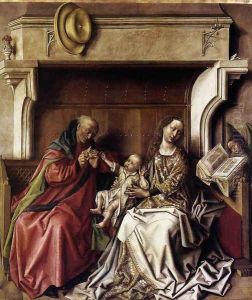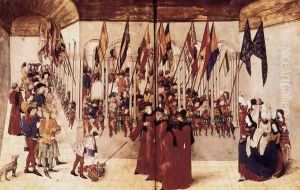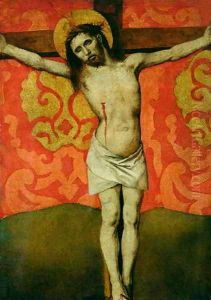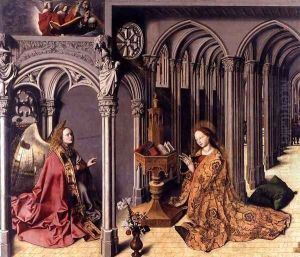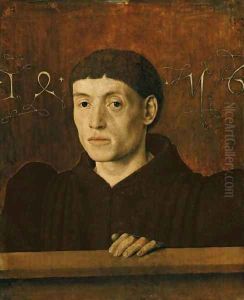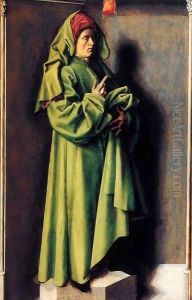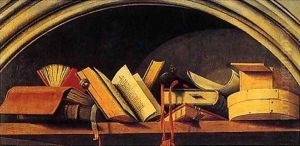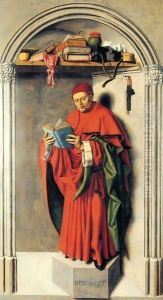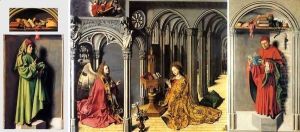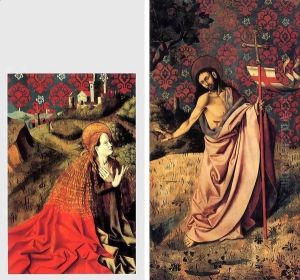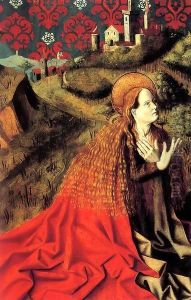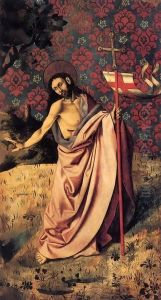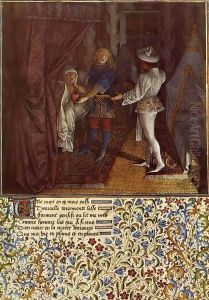Barthelemy d' Eyck Paintings
Barthélemy d'Eyck, also known as Bartholomeus van Eyck or the Master of the Annunciation of Aix, was a Netherlandish artist who is believed to have been born around 1420 and whose death is recorded after 1470. Though much of d'Eyck's life remains shrouded in mystery, he is recognized for his significant contributions to Early Netherlandish painting, a movement characterized by its detailed naturalism and complex iconography.
D'Eyck is often associated with the court of René of Anjou, where he is believed to have served as a court painter. This affiliation provided him with opportunities to work on a variety of commissions, ranging from illuminated manuscripts to panel paintings. One of his most notable works is the Annunciation, a panel painting for the Cathedral of Saint-Sauveur in Aix-en-Provence, which showcases his skill in handling light and texture, affirming his place within the Netherlandish tradition.
Despite the scarcity of surviving works definitively attributed to him, d'Eyck's influence is evident in the stylistic elements that pervade the small body of his recognized oeuvre. His meticulous attention to detail, use of vibrant colors, and ability to convey complex religious narratives through his art have secured his reputation as a master of the 15th century.
The exact details of d'Eyck's training and early career are largely speculative, but it is believed that he was influenced by Jan van Eyck, a prominent figure of the time. However, it remains unclear whether there was a direct familial relation between them. Throughout his career, d'Eyck's work displayed a keen observation of the natural world, a hallmark of the Netherlandish painting tradition, and his compositions often featured innovative use of perspective and space.
Barthélemy d'Eyck's legacy is one of mystery and mastery. His contributions to the art world, particularly in the realm of manuscript illumination and panel painting, reflect the transition between the Gothic and Renaissance periods. Despite the limited number of works attributed to him and the ongoing debates concerning their authorship, d'Eyck remains a figure of fascination and study among art historians, emblematic of the richness and complexity of Early Netherlandish art.
